Get the weekly SPARTANAT newsletter.
Your bonus: the free E-Book from SPARTANAT.
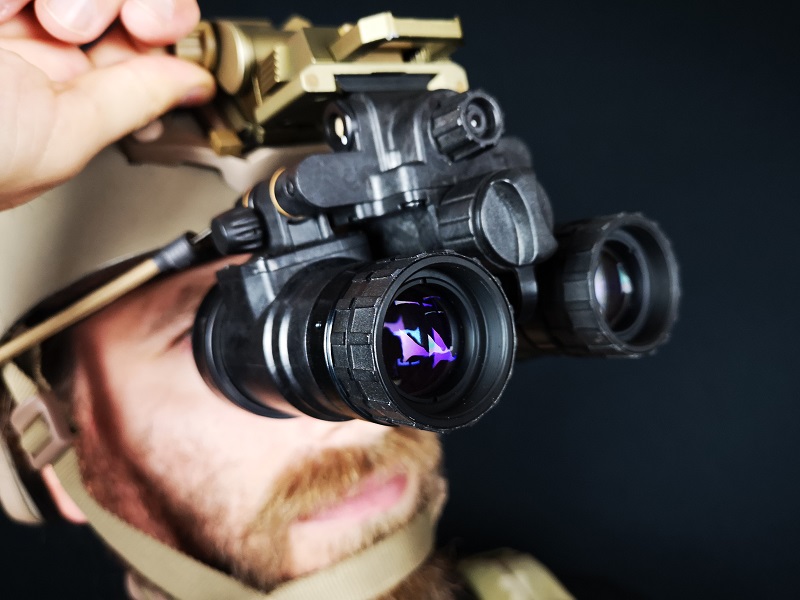
REVIEW: IEA Mil-Optics BNVD NT-1431
The BNVD NT-1431 offers a more affordable alternative to the AN/PVS-31 with the performance of an AN/PVS-14. It is compact, well-designed, and functional, providing a great user experience.
A few months ago we introduced you to the BNVD NT-1431 from IEA Mil-Optics, now we have also tested one. What is the BNVD NT-1431? In essence, it is a housing similar to the AN/PVS-31 – HERE in our detailed review – with the lenses of an AN/PVS-14. This makes the device significantly cheaper than its American counterpart and also available for civilians, but is it any good? Find out with us.
Handling
 The BNVD NT-1431 is very compact, measuring only 11.5 x 10.5 x 8.5 cm and weighs approximately 630 grams including the battery.
The BNVD NT-1431 is very compact, measuring only 11.5 x 10.5 x 8.5 cm and weighs approximately 630 grams including the battery.
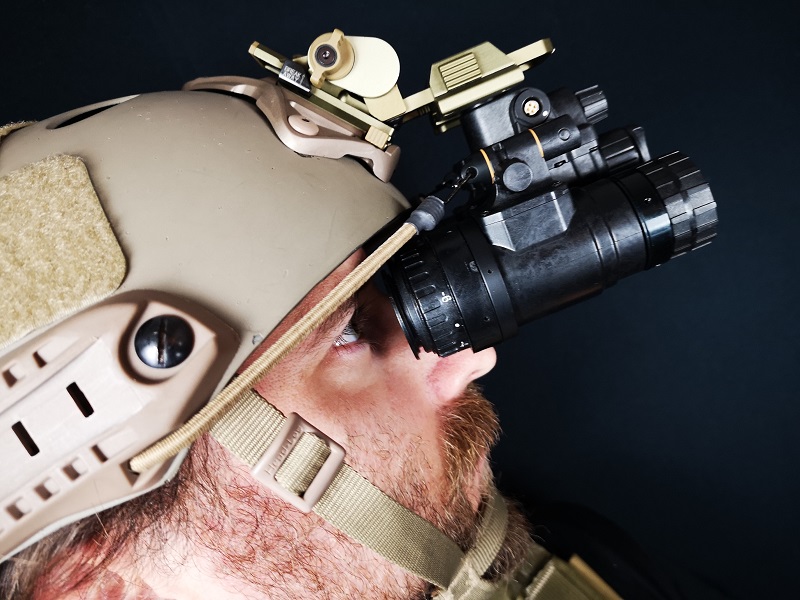 It looks good on the helmet. Everything works as it should. The eye relief can be easily adjusted and focusing is smooth and precise.
It looks good on the helmet. Everything works as it should. The eye relief can be easily adjusted and focusing is smooth and precise.
 Like the original, the tubes can be rotated individually. A useful feature when you need to quickly look at something without night light amplification.
Like the original, the tubes can be rotated individually. A useful feature when you need to quickly look at something without night light amplification.
 A particularly handy feature is rotating the tubes when the BNVD NT-1431 is folded up and stored on the helmet. The tubes are the heaviest part of a night vision device and can be carried close to the center of gravity, which will be appreciated by your neck muscles in the long run.
A particularly handy feature is rotating the tubes when the BNVD NT-1431 is folded up and stored on the helmet. The tubes are the heaviest part of a night vision device and can be carried close to the center of gravity, which will be appreciated by your neck muscles in the long run.
 At first glance, the BNVD NT-1431 does not differ from the AN/PVS-31. They do differ in terms of water resistance. The NT-1431 can withstand a rain shower without any problems, but it is not designed for diving like its counterpart. It operates using only one AA battery.
At first glance, the BNVD NT-1431 does not differ from the AN/PVS-31. They do differ in terms of water resistance. The NT-1431 can withstand a rain shower without any problems, but it is not designed for diving like its counterpart. It operates using only one AA battery.
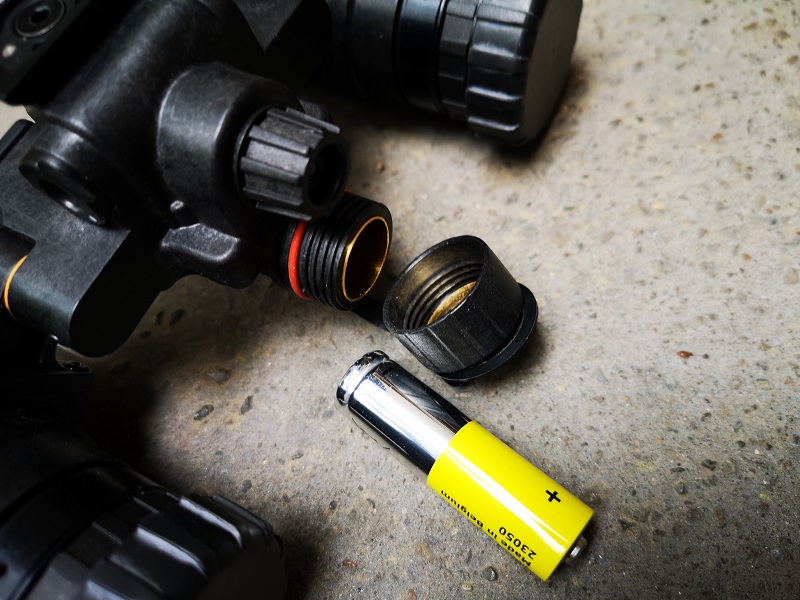 Whether alkaline, lithium, or Ikea, all batteries have worked flawlessly and allow you a battery life of up to 10 hours per battery.
Whether alkaline, lithium, or Ikea, all batteries have worked flawlessly and allow you a battery life of up to 10 hours per battery.
In direct comparison
 Yes, we love comparing things, so here too. In the image on the left is the AN/PVS-31, and on the right is the BNVD NT-1431. The small and large differences are quickly noticeable. Both can be connected to the external L3 PVS-31 Battery Pack.
Yes, we love comparing things, so here too. In the image on the left is the AN/PVS-31, and on the right is the BNVD NT-1431. The small and large differences are quickly noticeable. Both can be connected to the external L3 PVS-31 Battery Pack.
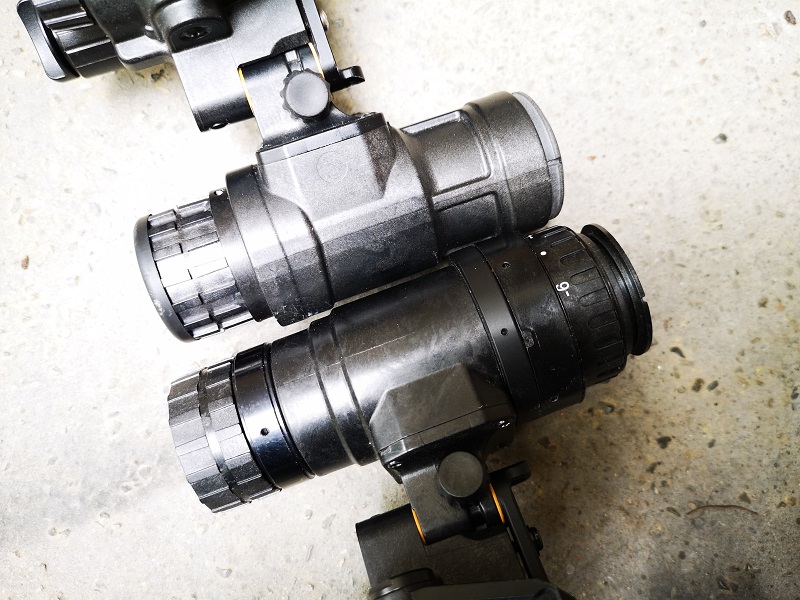 The housing shape is mostly the same, only the NT-1431 is 1 cm longer due to the AN/PVS-14 components used.
The housing shape is mostly the same, only the NT-1431 is 1 cm longer due to the AN/PVS-14 components used.
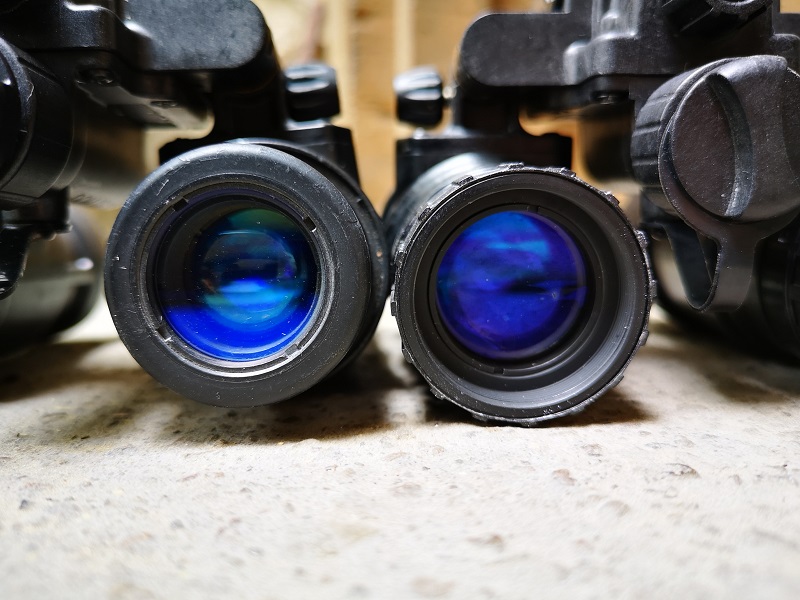 On the left, the new generation of lenses on the AN/PVS-31, on the right the lenses of the BNVD NT-1431. Don't get us wrong, they are impeccable lenses and you can focus perfectly, but in direct comparison, you can see that everything is slightly better with the new lenses, especially when in motion. It would be bad if it wasn't; after all, there are a few decades of technology difference between them.
On the left, the new generation of lenses on the AN/PVS-31, on the right the lenses of the BNVD NT-1431. Don't get us wrong, they are impeccable lenses and you can focus perfectly, but in direct comparison, you can see that everything is slightly better with the new lenses, especially when in motion. It would be bad if it wasn't; after all, there are a few decades of technology difference between them.
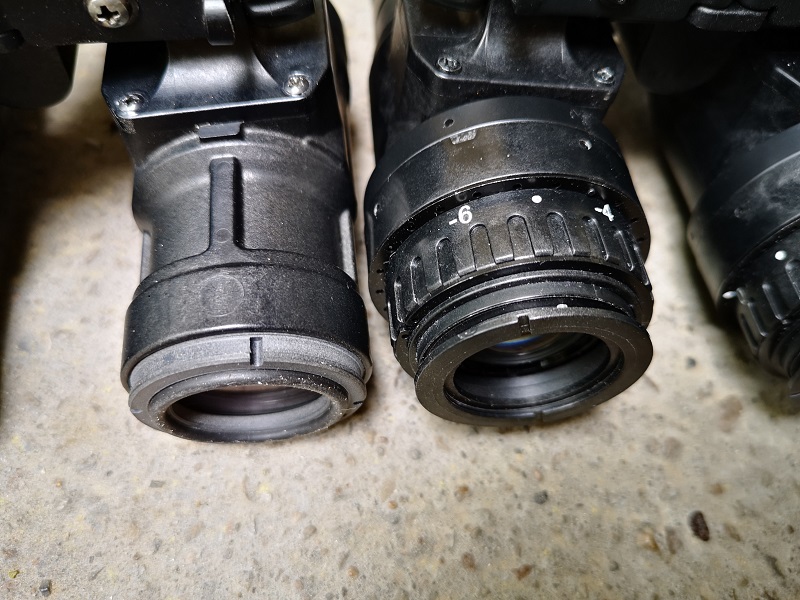 The differences in the ocular are obvious. The BNVD NT-1431 offers you the usual adjustable diopter compensation. This is practical but also adds extra weight. However, with the NT-1431 you can use all kinds of accessories originally designed for an AN/PVS-14.
The differences in the ocular are obvious. The BNVD NT-1431 offers you the usual adjustable diopter compensation. This is practical but also adds extra weight. However, with the NT-1431 you can use all kinds of accessories originally designed for an AN/PVS-14.
 The dovetail and the connection bridge with rotation mechanism show no differences. Everything can be adjusted perfectly and without wobbling.
The dovetail and the connection bridge with rotation mechanism show no differences. Everything can be adjusted perfectly and without wobbling.
The Tubes
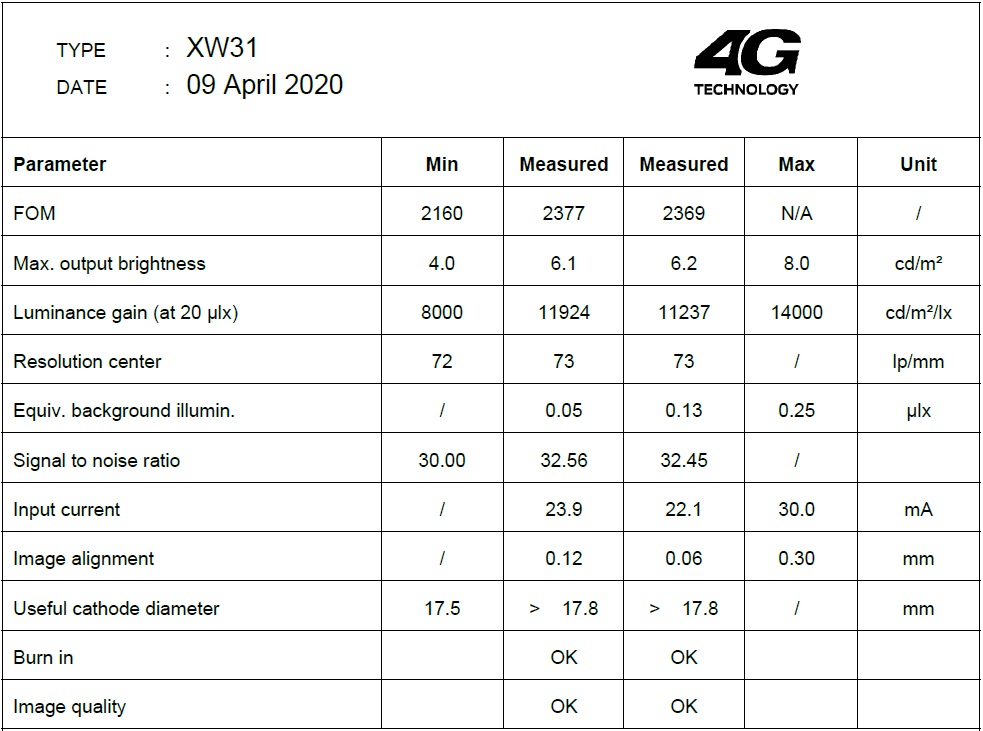 The heart of a night vision device is always the image intensifier tube. HERE you can read everything about how the tubes work, the same goes for the BNVD NT-1431. We received it for testing with the Photonis 4G+ ONYX tubes. These are Generation 2 tubes, but thanks to new production technologies, they are just as good as a high-end Generation 3 tube. As you can see from the table above, both tubes have a measured FOM of 2,370, which is at the same level as the currently best Omni 7 tubes with an FOM of 2,300.
The heart of a night vision device is always the image intensifier tube. HERE you can read everything about how the tubes work, the same goes for the BNVD NT-1431. We received it for testing with the Photonis 4G+ ONYX tubes. These are Generation 2 tubes, but thanks to new production technologies, they are just as good as a high-end Generation 3 tube. As you can see from the table above, both tubes have a measured FOM of 2,370, which is at the same level as the currently best Omni 7 tubes with an FOM of 2,300.
SPARTANAT is the online magazine for Military News, Tactical Life, Gear & Reviews.
Send us your news: [email protected]
Ad
similar
Get the weekly SPARTANAT newsletter.
Your bonus: the free E-Book from SPARTANAT.


